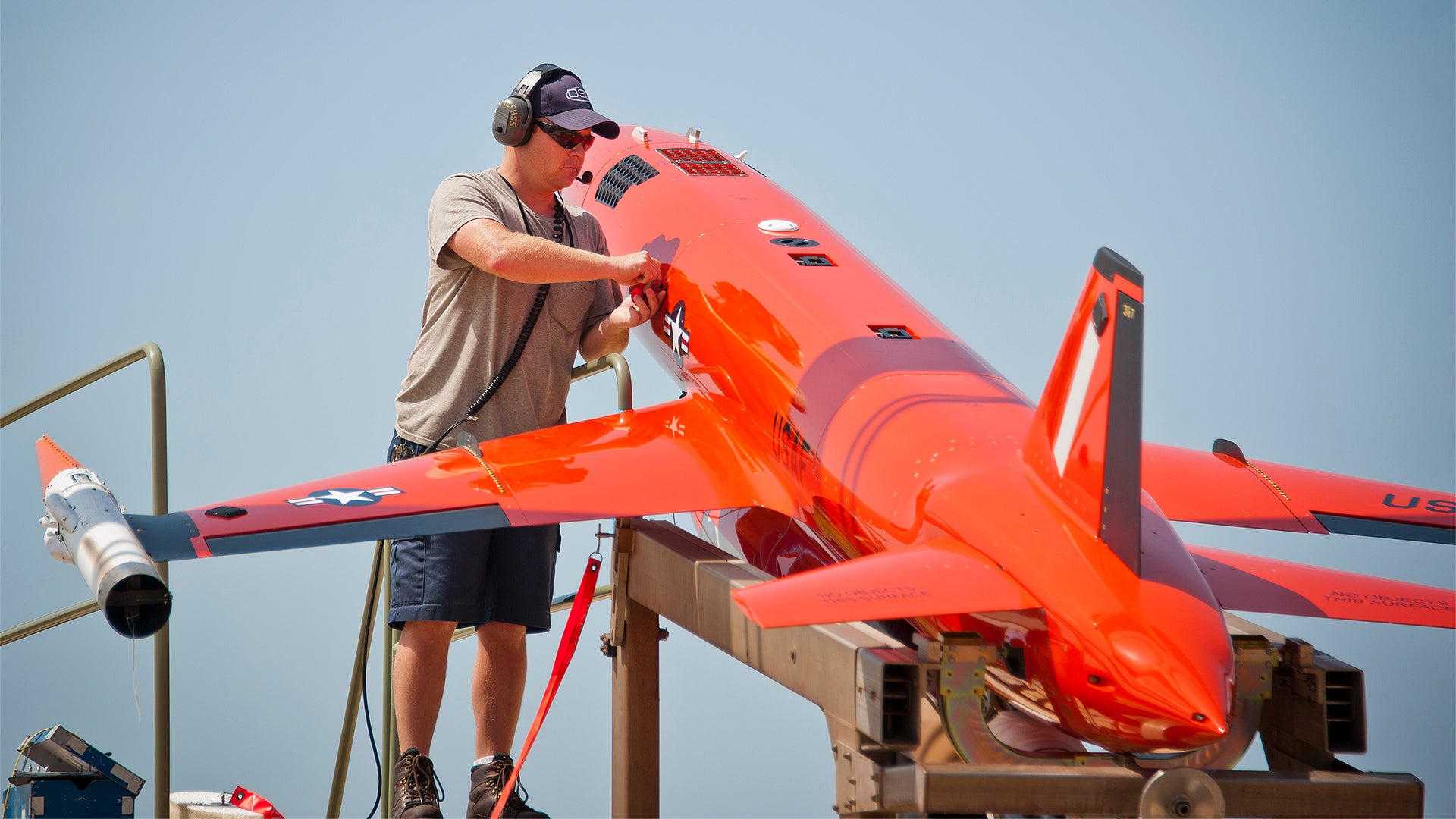The Air Force Research Laboratory has awarded target drone builder Kratos a contract to execute what it calls a Low-Cost Attritable Strike Unmanned Aerial System Demonstration (LCASD). This proof-of-concept initiative is centered on creating a (relatively) cheap unmanned combat aircraft that the USAF can afford to lose in combat, even opting to do so willingly by sending it on a one-way mission if need be. Alternatively, if the vehicle had the range to return to friendly territory, it could be repeatedly recovered and launched again on other missions, even from small bases without runways.
The contract’s total value is $40.8 million, but the Air Force is only coughing up around $7 million, with the rest coming out of Kratos’s pocket. A press release from Kratos states that, in exchange for their much larger contribution, they will “retain hard and other assets including aircraft, related support and other equipment, and important intellectual property, software, data, platform, and system rights. Additionally, planning by AFRL includes a desire to further evolve the system via subsequent technology maturation Government funded spirals valued at approximately $100 million.”
Here is exactly what the AFRL wants out of this demonstration phase:
The LCASD system KUSD will provide a configurable design for multiple variants, anticipated to perform various missions that could require Nap-of-The-Earth (NOE) Flight, Cruising at High Altitudes, Defensive Counter Air (DCA) Maneuvers, Offensive Counter Air (OCA) Maneuvers, the Suppression of Enemy Air Defenses (SEAD), and the Destruction of Enemy Air Defenses (DEAD). Additionally, the System will also incorporate performance capability including extreme agility for missile avoidance maneuvers to improve survivability. The Kratos LCASD design will meet, or in certain cases significantly exceed, the following stated Air Force goals for the program:
- UAS Acquisition Cost: $3 million or less for the first unit up to 99 units, and $2 million or less for 100-or-greater unit quantity purchases.
- 1,500 nautical mile mission radius with a 500 lb. payload.
- Capable of Mach 0.9 Dash.
- Maximum G load limits, maneuver rates, and subsystem environmental suitability.
- Internal weapons capability; sized to carry and deliver at least two GBU-39 small diameter bombs.
- Runway Independent Take-off and Landing capability.
- Emphasis on the use of Commercial-Off-The-Shelf (COTS) materials, sub-systems, manufacturing processes, and open mission system architecture concepts.
- Tactical consideration of the vehicle shape, elimination of gaps and mismatches, and aero-structural inlet integration.
If you’re thinking that this is a lot to ask from a program that will be co-funded by the contractor and will cost about one third of a single F-35, you’re not alone. But Kratos will likely be able to evolve one of their target drone designs, like the BQM-167i, to suit these requirements, potentially saving millions in development costs.
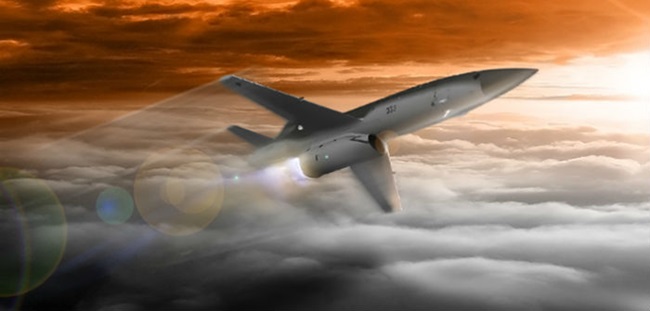
These systems are already capable of being launched and recovered without a runway. Although the required mission radius for the LCASD program is exceedingly large, equating to a whopping 3,000-mile range while carrying a 500 lb. payload, it will also have to be able to maneuver hard to avoid threats, so this thing will have to carry a lot of fuel and be rigid enough to handle some decent g-loads.
Although the requirements seem to state that this vehicle would be capable of counter-air and SEAD missions, it’s unclear if any of these missions will be demonstrated, especially considering the shallow funding involved. But Kratos has already demonstrated some pretty cool capabilities with its drones, including collaborative teaming and tethered operations with a manned attack aircraft.

Regardless of how far this concept will evolve within the confines of this contract, for basic-but-still-critical missions, the Low-Cost Attritable Strike Unmanned Aerial System makes a lot of sense. In fact, it makes so much sense it seems like it’s being greatly underserved, dollars-wise. Then again, the concept may not be all that new at all.
In its most basic form, what we’re talking about is something akin to a reusable cruise missile. Modern cruise missiles are far smarter than their predecessors, and they can be seen as having some properties we associate with the modern unmanned combat air vehicle concepts. These include the ability to network with other missiles to work cooperatively, to use third party targeting data, and to autonomously select targets on their own.
Cruise missiles like Lockheed’s stealthy Long-Range Anti-Ship Missile (LRASM) can do all of this. But before LRASM was born, stealthy reusable cruise missiles may have been tested under the cover of deep classification. I wrote about the potential existence of this program, possibly dubbed Minion/Minotaur, some time ago, stating:
“It turns out that in 2003 Lockheed spilled the beans about a concept called ‘Minion’ which was a very low observable (stealthy) 7,500lb air-launched cruise missile that could be armed with area sub-munitions, four GBU-39 Small Diameter Bombs, and advanced jamming system, or even a microwave pulse weapon used for the surgical destruction of enemy electronics or power stations. Minion could be launched by large fighters or bombers and utilized an innovative ‘trap door’ jet inlet design for optimally low signature and storability. What was most interesting about Lockheed’s Minion was that it could actually land like a conventional aircraft back at a friendly base after its mission ended, thus is was totally reusable.
Since 2003 not much has been heard regarding the Minion program, although some say that the concept was flight tested out of Area 51 well before any mention of it was ever made public. People have even pointed to the apparent fact that DC-130s, historically America’s drone hauling and cruise missile test platform of choice, operated out of the Nellis Range Complex for extended periods of time during the early 2000s.
The DC-130s also were known to have taken part in Operation Iraqi Freedom, launching what was said to have been a handful of disposable Firebee drones, packed with chaff, that confused Iraqi radars while Tomahawk cruise missiles made their way into Baghdad proper during the opening salvos of the now notorious ‘Shock and Awe’ bombing campaign. It would seem that the biggest planned air war of the decade would have been a perfect time to test Minion. Who knows, maybe a handful of pre-production Minions were partially responsible for attacking key electricity relays and jamming radar sites located deep in Iraqi airspace during the early stages of the assault.
I have always believed that the F-117 Nighthawks would have gotten a stealthy jamming platform if they already did not have one, especially after the loss of ‘Vega 31’ over Bosnia. Maybe Minion was that jamming platform or at least a piece of the solution, and maybe it was so good at its ‘kinetic’ job that it later helped put the F-117 completely out of business…”
I also wrote a piece called Tyler’s 10 Thoughts On The Future Of Drone Warfare, in which the blurring of the lines between unmanned combat air vehicles and cruise missiles would become a very real thing. Thought number eight stated:
“Modern air, submarine and sea launched cruise missiles are America’s weapon of choice when it comes to the opening strikes of any serious shooting war. Missiles like the BGM-109 Tomahawk and AGM-158 JASSM offer incredible capabilities at almost no risk to the user, the problem is that they are incredibly expensive and can only be used once.
A single top of the line Tomahawk Land Attack Missile (TLAM) can cost almost $1.5M a pop and the air launched JASSM costs as much as $750k per copy. Even in a relatively small and some would say unnecessary conflict like Operation Odyssey Dawn which aimed at overthrowing Gaddafi in Libya, would see over 150 Tomahawks fired in anger by US forces. These stocks would cost well over $225M to replace, not cheap by any means, but everything is relative in the world of modern military weaponry.
Interestingly enough, one of the cheapest components in these cruise missiles is the munitions themselves. So basically a military is paying a million and half dollars to deliver a warhead that costs a few thousand dollars. Then consider that the full combat range of these weapons, around 1,000 miles in the case of the Tomahawk, is rarely fully utilized in real-world combat scenarios.
Yet surely using these high-tech cruise missiles are less expensive than losing a $30M stealth drone, or even worse, a $150M manned stealth fighter, especially at the very start of an offensive when missions are usually aimed at dismantling the enemy’s air defense capabilities, right? Well currently yes, but there may be a better way of doing business in the future, and that better way may just come in the form of optionally reusable cruise missiles.
In a case like Libya, the nation’s main population centers held the majority of strategic targets and thus major air defense components were located close to the coastline, which is common among many of America’s possible adversaries around the globe. This means that a Tomahawk launched 200 miles off the coast of the country in question would only utilize maybe one-third to one half of its total range by the time it detonates on its target. In theory, these missiles retain enough fuel at the time of their detonation to easily return to allied territory to be recovered and reused again if they were designed to do so.
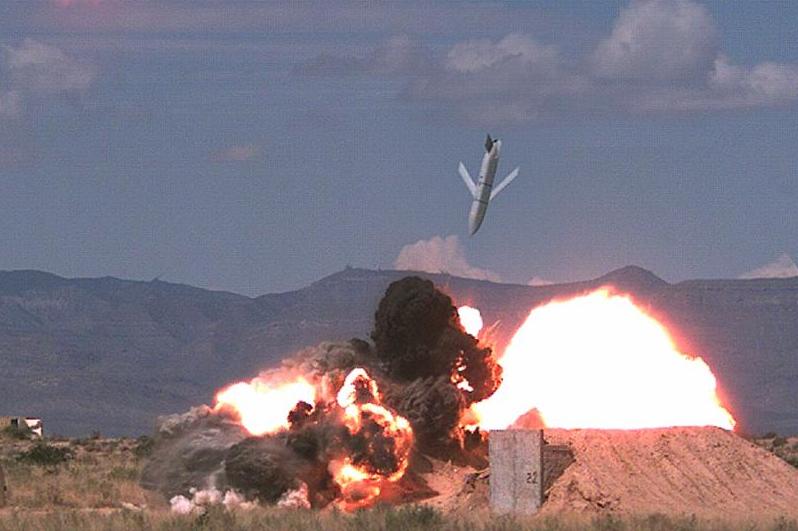
Alternatively, if needed they could continue to fly one way missions to a target located deep in enemy airspace and blow themselves to smithereens as they would not have enough fuel to return to a safe recovery area anyway. In other words, optionally disposable cruise missiles make a tremendous amount of sense compared to the strictly disposable ones we use today.
Furthermore, if the missile could utilize sub-munitions instead of destroying itself it would be able to use a variety of weapons loads depending on the target set and could even be able to attack multiple targets on a single mission. This would be especially useful against soft ‘area’ targets like surface-to-air missile sites or motor-pools and other highly defended but unfortified structures and material. Once again, such a system would be modular in nature and would retain the option to be packed with as much explosive material as possible and sent to hit a hardened structure almost 1,000 miles from its launch point if requested.
The bottom line is that I believe the definition of drone and of expendable cruise missile is going to begin to blur, especially as more expensive technology is loaded into current single use cruise missile designs and cheaper but more capable technology continues to evolve from current drone research and development. Eventually the two concepts will meet in the middle when it comes to high-risk and first strike weaponry and relatively cheap and optionally reusable missiles will take the place of the Tomahawks and Storm Shadows of today.”
So this all seems to be happening, and the reverse is true as well, with expendable cruise missiles becoming smarter and more like autonomous unmanned combat aircraft.
Starting with a target drone mindset makes a lot of sense in the case of the LCASD program, as these systems were built with the possibility of loss in mind. In fact, target drones have a long and relatively successful history of being used in combat for unconventional purposes. As mentioned earlier, during Operation Iraqi Freedom, BQM-34 Firebee drones were used to spread radar-confusing chaff over Baghdad. Decades before that they were used in Vietnam in a variety of unconventional roles, including arming them with weapons of their own.
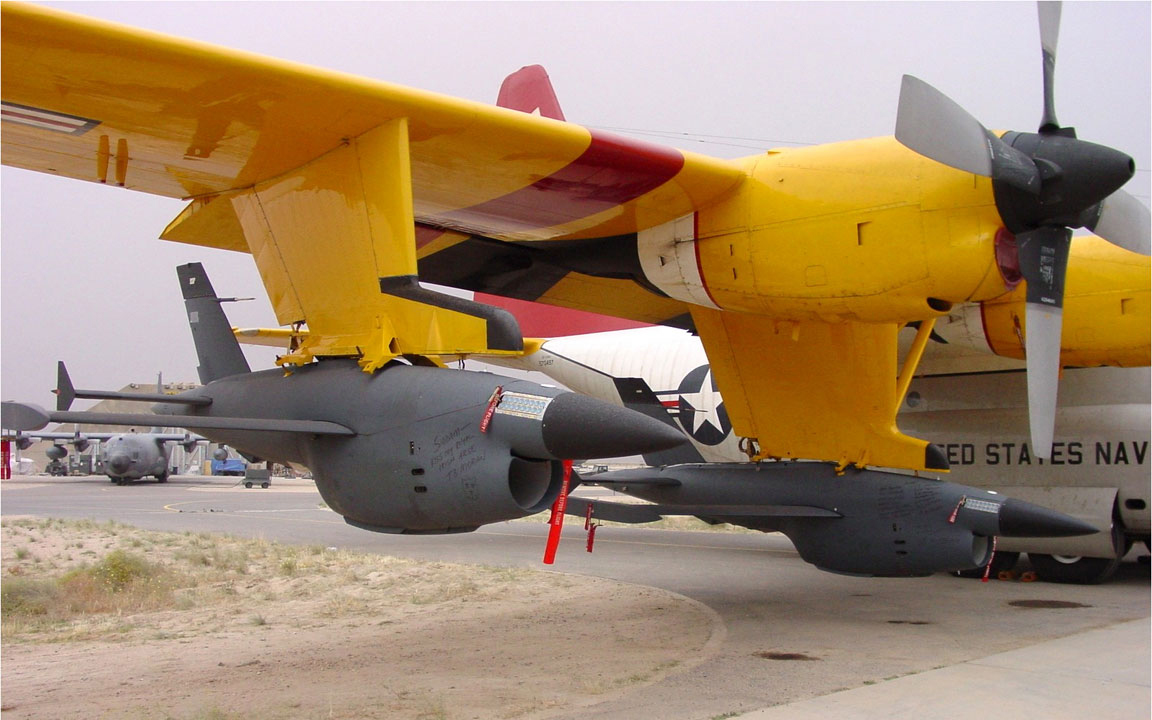
Also, evolving target drones into widely deployable combat drones makes sense because they already have the ability to launch and recover without the need for a runway. This is an especially relevant capability when it comes to fighting a foe with strong anti-access/area-denial capabilities, and when doing so in a large theatre of operations—like, say, the Pacific.
Runways throughout a region are all mapped by potential foes, leaving them vulnerable to attack, especially by ballistic missiles. But launch points for these types of low-end unmanned combat aircraft would be much harder to detect and predict, and could very well be set up far forward of traditional runway-based aircraft and drones.
Austere basing of such a potent long-range weapon system would leave the enemy much more vulnerable to attack and would make preempting airstrikes against air power capabilities much tougher proposition. Basically, these things could be deployed anywhere with only a small infrastructure commitment. In doing so, this would complicate the enemy’s war plans drastically.
This lower-end unmanned strike option will leverage rapidly-producible composite structures and off-the-shelf components, making replenishment of these drones far easier than replacing manned fighter- or attack aircraft, which can take years from the time of ordering long-lead materials to seeing a finished product roll off a production line. This could help hedge against the USAF’s deep commitment to a finite number of tactical aircraft, which cannot be easily replaced during wartime. Also, because these systems are not meant to last 40 years and fly thousands of hours, they can be built cheaper, upgraded far more easily, and adapted to new roles far more rapidly than their much more elaborate and expensive counterparts.
I laid out these oft-unspoken attributes of unmanned combat air vehicles, and many more, in my recent feature The Alarming Case of the USAF’s Mysterious Missing Unmanned Combat Air Vehicles, stating:
“You don’t have to build a UCAV to fly 8,000 hours as with manned fighter aircraft, a requirement that adds significantly to an aircraft’s unit and development costs. Instead UCAVs can be designed to last a fraction of that flight time.
The reason for this is that these aircraft don’t have to fly anywhere near as much as their manned counterparts. Nobody really has to train to fly them at all. Computer simulations and modelling, a strong centralized test and development effort and intermittent large-scale air combat exercises will be essential in proving new UCAV tactics and to certify the systems as effective, but beyond that these things can largely sit in a hangar and wait for combat. The days of putting hundreds of hours on a tactical jet airframe a year would be over. As a result, a UCAV could be designed to last a couple thousands hours of flight time or even far less.
UCAVs can be ordered to fly into the most dangerous airspace in the world without the potential loss of aircrew being a factor, which can have huge political ramifications both abroad and at home. This also means commanders can take greater risks with greater potential rewards during conflicts and can more freely strike at the heart of the enemy’s ability to wage war.
For instance, instead of very slowly breaking down the bad guys’ area denial and anti-access capabilities from long-ranges using expensive standoff munitions, massive swarms of UCAVs can execute direct attacks on key anti-air warfare targets.
UCAV’s far lower unit cost and simpler manufacturing process, one that can make the most of large composite structures and 3D printing, also means they can be replaced more efficiently than manned aircraft. In other words, UCAVs can speed up an air campaign’s intended results compared to manned systems, while doing so at far lower risk.
Since they don’t have to have an 8,000 plus flight hour lifespan that will be spread over many decades, new UCAVs with enhanced design features and better low observable qualities can be bought on a regular basis. Such a concept also has the potential to greatly smooth the USAF’s notoriously disgraceful and unsustainable big-ticket weapons procurement process.
Instead of buying an entirely new fighter jet every couple of decades, the service can constantly buy far cheaper UCAV designs in tranches of ever increasing capabilities tailored to match emerging threats in near real-time. This type of procurement concept allows for a far more nimble response to changing tactical challenges, and in doing so it puts America’s potential enemies at a drastically greater disadvantage when it comes to trying to counter our own capabilities.”
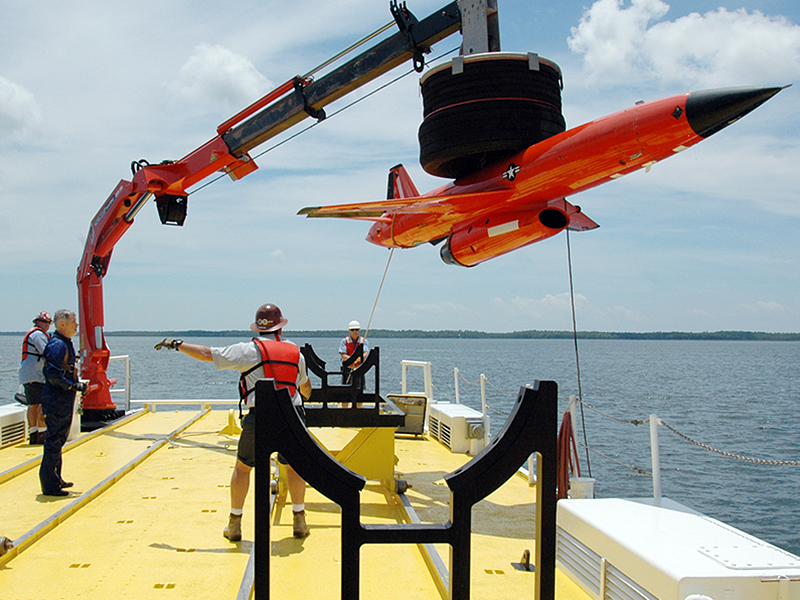
What is alarming about the Low-Cost Attritable Strike Unmanned Aerial System Demonstration initiative is just how little funding it has, with most of it coming from the manufacturer itself. Sure, some of the basic research and development has been done in the form of advanced target drones, but such a low-cost and flexible capability seems like it would provide the Air Force with at least some type of hedge against its super big-ticket strike programs, in which the F-35 and B-21 are included.
So why isn’t the USAF being more aggressive, considering the low risk-high payoff nature of this concept? We’ve likely already answered this question already: Doing so will threaten major strike programs and take dollars away from them in the process, even if in small quantities, which the USAF historically sees as unacceptable. There’s also the possibility of a mature UCAV program hiding in the classified world, although the two concepts are not really comparable. Regardless, the total force, including the F-35, B-21, and a high-end UCAV program, could greatly benefit from something like this.
There is little doubt that such a system, with such unpredictable basing , would put potential enemies at greater risk than they are today, and give US commanders the ability to make higher-risk decisions during times of conflict. Will we ever actually see it fielded operationally? Who knows, but at least Kratos is putting their money where their mouth is when it comes to believing in it—and that is a very good sign of the concept’s potential.
Contact the author Tyler@thedrive.com
